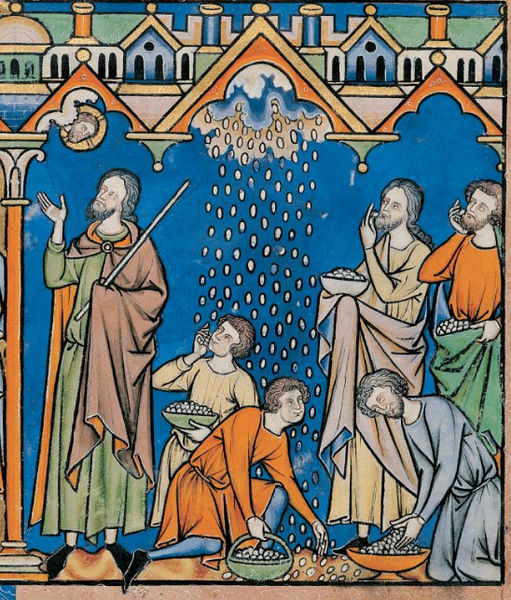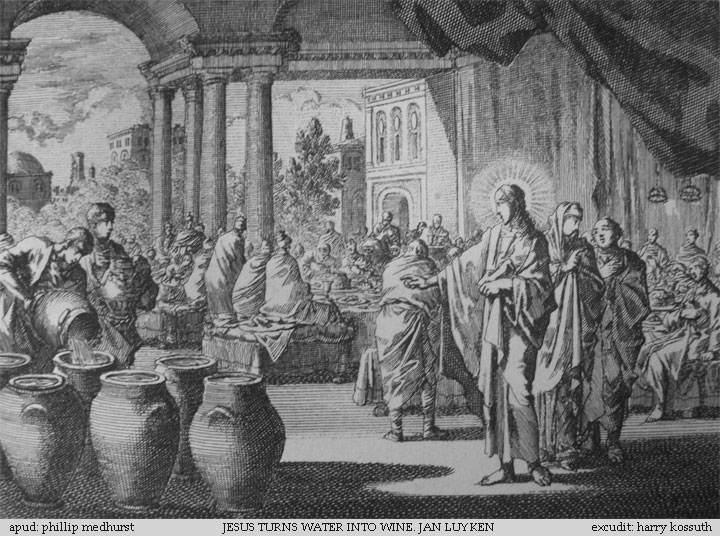What Would Jesus Eat?
Jim Campbell, DMin, dives into the diet of those living in the Holy Land, and illuminates what it would have been like to dine with Jesus.


There were a variety of foods available in the Holy Land. Chief crops were wheat, barley, olives, grapes; legumes such as lentils, fava beans, chickpeas; and vegetables such as onions, leeks, and garlic. Life was also made sweeter with fruits such as olives, grapes, date palms, apples, watermelon, pomegranates, figs, and sycamores (a low-quality fig eaten mainly by the poor). The people also raised sheep, goats, and cattle, and fished from the Mediterranean and the Sea of Galilee. Wine from the grapes was the main beverage.
Each day began with a light breakfast of bread or a piece for fruit. Bread was kneaded and baked every day, one of the mother’s main chores. At midday, those in the Holy Land would eat a light lunch of bread, grain, olives, and figs.
The main meal was eaten at the end of the day. Dinner was a one-pot stew served in a common bowl. Bread was used to spoon the stew. The stew might be a thick porridge of vegetables, lentils, or chickpeas spiced with herbs. Meat was only served occasionally, fish more often, mostly when the family had an important guest. Among the wealthy, lamb or calves were kept in stalls so they could be fattened for feasting (Luke 15: 23–30).
Meals were a sacred time when God’s presence was awaited and welcomed in every meal. The people recognized that although they had earned their daily bread, God still gave them all they had. Fellowship in a meal was always fellowship before God.

Jan Luyken’s Jesus Turns Water into Wine.
Hospitality
Travel in the Holy Land was dangerous. Single travelers, such as the man falling to thieves in the story of the Good Samaritan (Luke 19: 25–37), put their lives in jeopardy on the roads. Inns were about 25 miles apart and the traveler never knew if there was adequate food, water, or shelter at the end of the day.
Hospitality was an important value across the Mediterranean world, but it was a value particularly taught in the Jewish communities. There were no strangers, as those of the Holy Land remembered how God provided for them when they were aliens in Egypt. In Deuteronomy 24: 17–19 God specifically mandates that in harvest time people were to leave enough in the fields to feed the widows, orphans, and the resident foreigners: “For remember that you were slaves in the land of Egypt; this is why I command you to do this.” (Deuteronomy 24: 22)
Perhaps the greatest example of the meaning of hospitality is found in Luke 24: 13–34, the story of the disciples on the road to Emmaus. The disciples were leaving Jerusalem heartbroken about the events that had taken place. Jesus had been crucified, and they believed he was gone. They meet a stranger who counsels them with the Scriptures, calling them to remember what God had promised. At the end of the day after arriving at an inn, the disciples offer hospitality. And at the meal Jesus Christ is revealed to them in the breaking of the bread.
God calls us all to be hospitable, to serve those in need, especially the starving children and victims of malnutrition. In meeting them at the table, we are meeting Jesus Christ today.
Audio Prayer Experience
Immerse yourself in the story of Emmaus with this imaginative prayer exercise from Vinita Hampton Wright.
Sharing a Meal Activity

In Chapter 6 of Called to Be Catholic, young people are reminded that sharing a meal is a way that people bond and form community. Young people are invited to bring a food item to class, taking note of food allergies or dietary restrictions and providing alternatives. Young people begin the meal with a special prayer of thankfulness and gratitude, and then enjoy sharing their food items with one another. The group is encouraged to eat while enjoying the fellowship and conversation with each other. After the meal, the group discusses Christ’s presence in this communal gathering.
Here’s how to implement this activity in your community:
- Initiate a community-wide gathering. Ask participants to bring a dish or beverage to share with the group. Encourage a laid-back, informal environment that anyone can feel comfortable attending.
- Have participants share their stories and company with one another. Introduce newcomers to the group. Keep the discussion kind, polite, and supportive. If desired, share with the group this Food and Faith article by Jim Campbell to prompt discussion.
- At the end of the gathering, invite volunteers to share their prayers and intentions with the group. Pray together and set a date for the next Sharing a Meal gathering.
This activity is excerpted from Called to Be Catholic, Ch. 6, TE, page 47.

